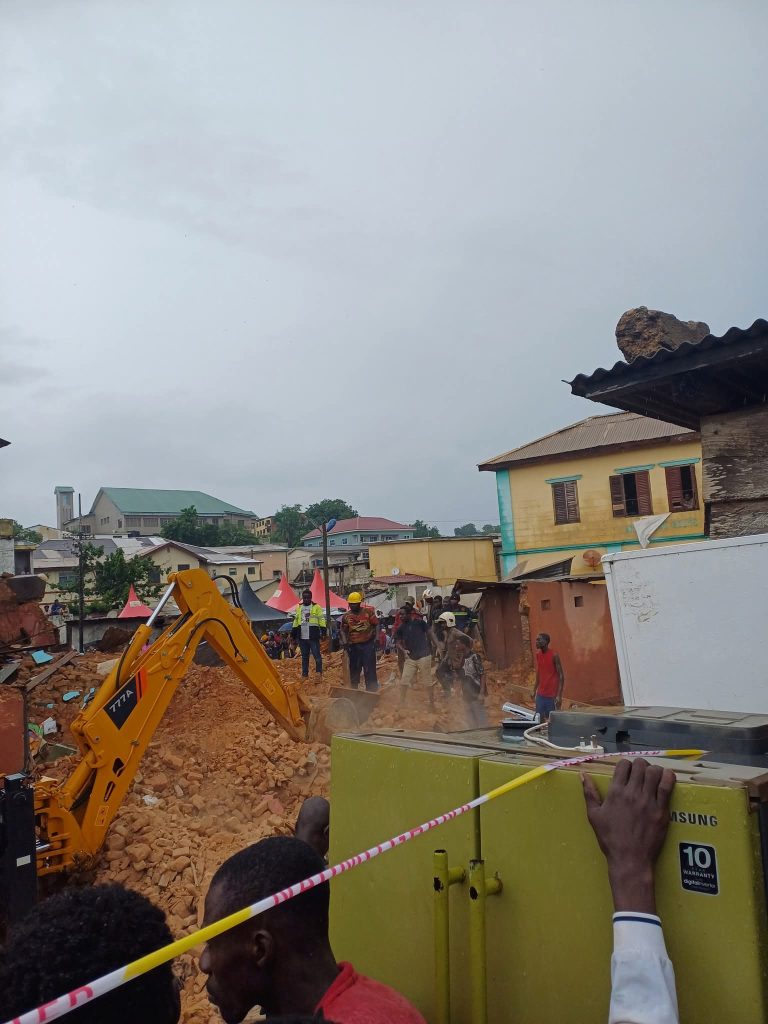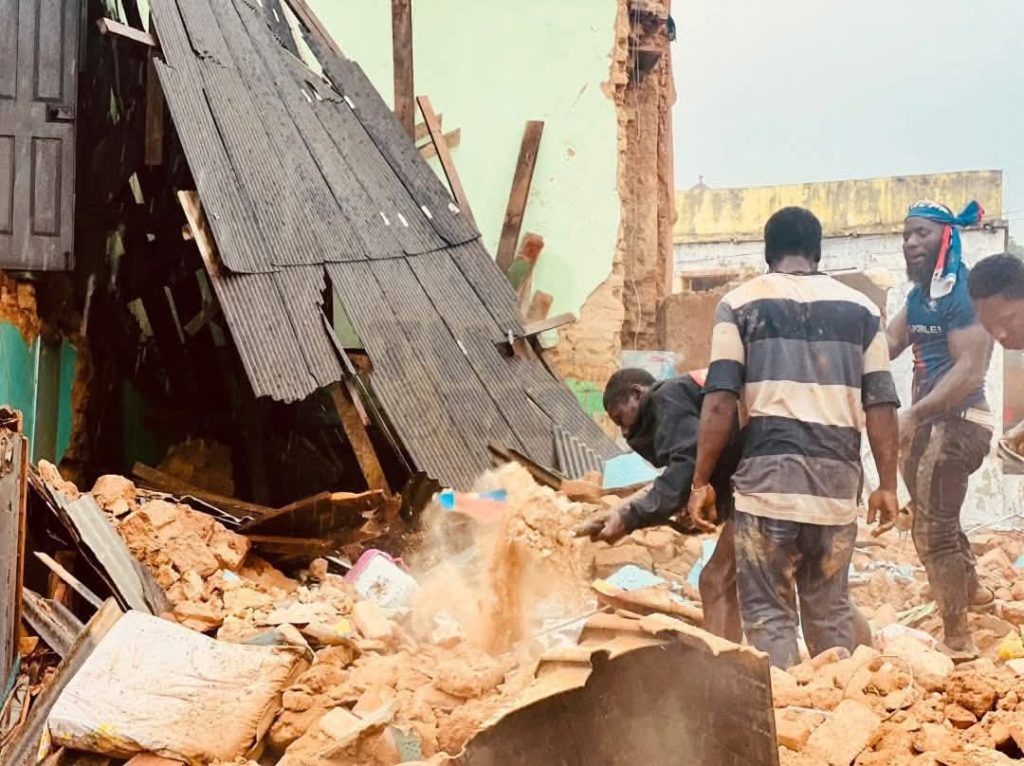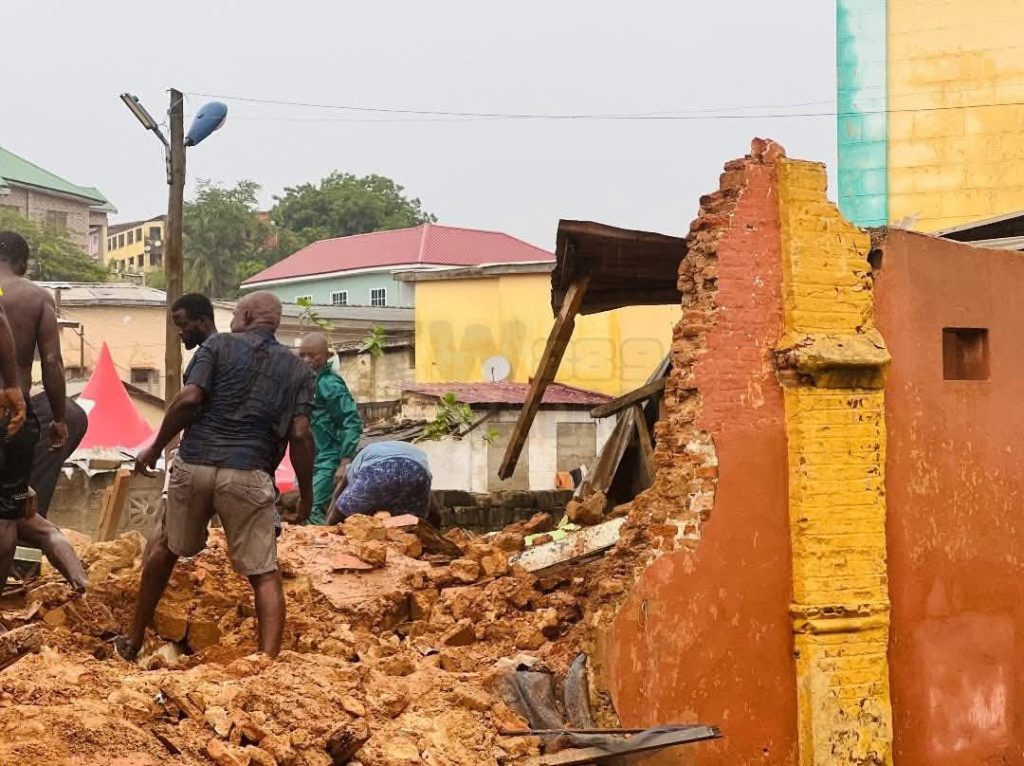A wave of buildings collapse has rocked the ancient city of Cape Coast over the past week, with seven structures crumbling in different parts of the metropolis and leaving three people dead, several injured, and many more displaced.
The alarming spate of incidents has triggered swift action from the Cape Coast Metropolitan Assembly (CCMA), which has begun demolishing weakened buildings across the city.
The most recent collapses occurred on Friday, June 27, when two separate structures came down—one in Brofoyedur, a densely populated fishing community, and the other at 3rd Ridge, a residential suburb. Fortunately, there were no casualties in either of the two latest cases.

According to local authorities, the Brofoyedur building was constructed mainly from mud and had shown signs of structural weakness for years.
The 3rd Ridge collapse involved a storey building that was still under construction, raising questions about adherence to safety standards and building regulations.
Deadly incidents earlier in the week
The first five building collapses occurred between Saturday, June 22 and Thursday, June 26, resulting in three confirmed deaths and multiple injuries. Among the fatal incidents.

A residential house in Ntsin collapsed early Sunday morning, killing a mother and her teenage daughter while they were asleep.
Another tragedy occurred at Abura, where a partially abandoned house crumbled, fatally injuring a middle-aged man who was squatting in the building.
In Tantri, a one-bedroom dwelling gave way during a heavy downpour, leaving two occupants injured and requiring emergency evacuation.
Several of the affected structures were old and built decades ago with little to no reinforcement.
Some were found to have deep structural cracks, weakened foundations, and were visibly sagging.
Residents alarmed
The rash of collapses has thrown Cape Coast into a state of anxiety, especially in low-income communities where many families live in antiquated houses made of laterite, mud, or timber.

“Anytime it rains, we’re afraid our walls might not hold,” said Ato Mensah, a resident of Brofoyedur. “Most of these buildings are over 70 years old and we don’t have the means to rebuild.”
Others called for urgent government intervention and support schemes to help low-income homeowners replace structurally unsafe dwellings.
City authorities begin demolitions with cultural sensitivity
In response to the unfolding crisis, the Cape Coast Metropolitan Assembly has launched a targeted demolition exercise to remove all dangerously weakened structures within the city.
According to the Assembly, the operation will prioritize public safety, while also being sensitive to the historical significance of many of the buildings in Cape Coast—Ghana’s former colonial capital and a UNESCO heritage destination.
“We are taking every necessary measure to avoid further loss of life,” a spokesperson for the Assembly told reporters.
“But we are also consulting with the Ghana Museums and Monuments Board to ensure that we do not erase irreplaceable aspects of our cultural heritage.”
Call for stronger regulations and preventive action
Urban planning experts and civil society organisations have renewed calls for the enforcement of building codes and regular inspections to prevent future tragedies.
Some have criticized the lack of proactive measures, noting that many of the collapsed buildings had visible signs of decay long before the disasters occurred.
“The situation in Cape Coast should serve as a wake-up call to other municipalities with ageing housing stock,” said Dr. Kojo Bempah, a structural engineer and lecturer at UCC.
As the city begins its recovery and safety overhaul, residents are urging the central government to support relocation efforts and provide financial and technical assistance for rebuilding.











